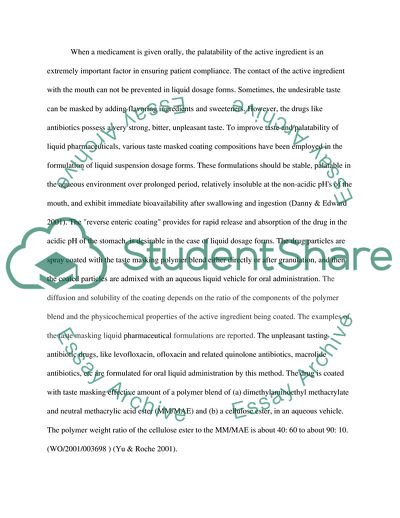Cite this document
(The Use of Polymers in Liquid Pharmaceutical Formulations Essay Example | Topics and Well Written Essays - 1250 words, n.d.)
The Use of Polymers in Liquid Pharmaceutical Formulations Essay Example | Topics and Well Written Essays - 1250 words. https://studentshare.org/chemistry/1718066-the-use-of-polymers-in-liquid-pharmaceutical-formulations
The Use of Polymers in Liquid Pharmaceutical Formulations Essay Example | Topics and Well Written Essays - 1250 words. https://studentshare.org/chemistry/1718066-the-use-of-polymers-in-liquid-pharmaceutical-formulations
(The Use of Polymers in Liquid Pharmaceutical Formulations Essay Example | Topics and Well Written Essays - 1250 Words)
The Use of Polymers in Liquid Pharmaceutical Formulations Essay Example | Topics and Well Written Essays - 1250 Words. https://studentshare.org/chemistry/1718066-the-use-of-polymers-in-liquid-pharmaceutical-formulations.
The Use of Polymers in Liquid Pharmaceutical Formulations Essay Example | Topics and Well Written Essays - 1250 Words. https://studentshare.org/chemistry/1718066-the-use-of-polymers-in-liquid-pharmaceutical-formulations.
“The Use of Polymers in Liquid Pharmaceutical Formulations Essay Example | Topics and Well Written Essays - 1250 Words”. https://studentshare.org/chemistry/1718066-the-use-of-polymers-in-liquid-pharmaceutical-formulations.


